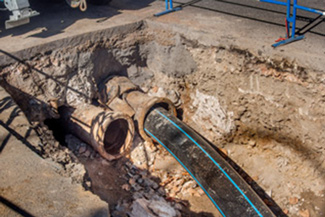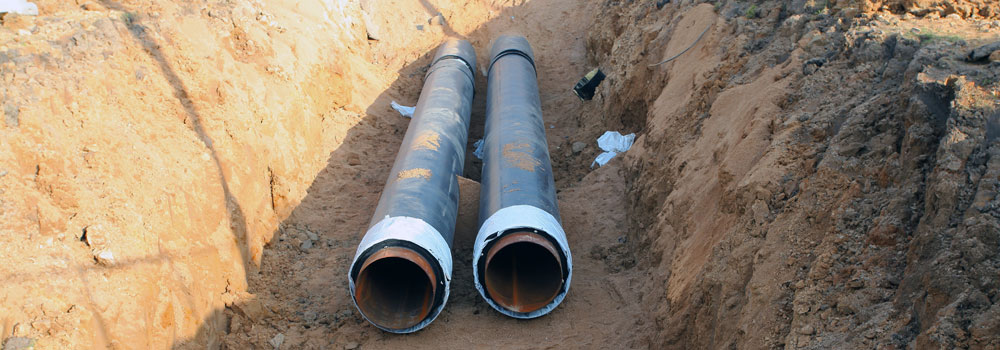Are you going to need a sewer line replacement
 It’s essential that your sewer line works properly, or you can find yourself in a messy, inconvenient and expensive situation. The best way to avoid costly sewer line replacement or repair is to perform or hire regular maintenance. A good plumber can use tools and technology, like video inspections, to check for signs of trouble.
It’s essential that your sewer line works properly, or you can find yourself in a messy, inconvenient and expensive situation. The best way to avoid costly sewer line replacement or repair is to perform or hire regular maintenance. A good plumber can use tools and technology, like video inspections, to check for signs of trouble.
The five most common sewer line issues to avoid are:
Leaking Sewer Lines
While leaks have similar signs and consequences as corrosion, they typically occur around a pipe joint. A sewer leak on your drain line, or main sewer line, can damage your property. Standing or pooling water from a leaking sewer pipes are also a health hazard to you and your entire family, and frequently goes misdiagnosed. Leaking drain pipes can also undermine your drain system and cause sags and separations. You can identify the specific point of a leak because you’ll notice water gathering in that area. For example, a concentrated patch of sewage water in your yard is a good sign there’s a joint leak just below the surface.
Sewer Blockages
A clog in the sewer line can lead to an enormous amount of pressure that eventually bursts your sewer line. Prevent clogs by being careful about what you put down your toilets. Don’t use them like you would a trash can. Grease, fats, and oil are all some of the biggest culprits when it comes to clogging lines. It’s NEVER a good idea to pour grease, oil, or other fats down a drain. Always pour hot grease into a coffee can or jar. Once it solidifies, you can throw it away. People mistakenly think that running hot water when pouring grease down a drain helps wash it away. This is not the case. Once grease cools off, it will harden and stick to your pipes—leading to sewer line clogs. If you notice gurgling sounds or significant backups in your toilets, you may want to call a professional to check for problems.
Sewer Pipe Corrosion
Pipes age and breakdown over time, and that goes for your main sewer line, too. This is especially true if your sewer line is anything other than durable PVC pipe. If your house was built before the mid-1970s and still has its original sewer system, it’s likely that a portion of that system is cast iron. After years of normal use, corrosion deposits adhere to the inner walls of the cast-iron pipe through a process called tuberculation. After 25-30 years, corrosion deposits usually have taken over 25 percent of the cast-iron pipe.
With every flush down the toilet, debris gets slowed or trapped by these deposits. These deposits reduce the flow rate of the cast iron and eventually can cause a clogged drain. When pipes corrode, they eventually collapse and begin to restrict the flow through the main sewer line. Signs of corroded and collapsed pipes include gurgling noises, slow draining and strong odors in your yard or basement.
Cracks and Breaks in Sewer
Cracking or broken sewer lines are the first steps before a pipe corrodes and completely collapses. It’s best to catch cracks and breaks before they become full collapses. There are quite a few different reasons that can cause cracked sewer pipes or broken sewer pipelines including the material used to create the sewer pipe, environmental influences and other factors. Environmental factors can cause the earth to shift putting stress on your pipes that may eventually cause them to collapse. Again, the best way to identify cracks and breaks early on is to get regular sewer line maintenance and inspections.
Root Infiltration in Sewer Line
The trees in your yard can be difficult to control. As they grow above ground, their root structures are growing below the ground. Roots grow towards sewer pipes because they hold water, nutrients and oxygen—things roots crave. Those roots can put pressure on your main sewer line and eventually penetrate it. And if the root finds a crack or leak in the pipe, they’ll creep in the pipe wall and grow into the pipe, blocking off the flow of waste into the sewer. Eventually, the root growth will add too much pressure to the pipe, causing it to break and collapse. A video inspection is the best way to see if a tree root is the cause of clogging and backups.
Summit Plumbing has the skilled technicians and experience to address all your sewer line maintenance, repair and replacement needs. Call us today for a free estimate!

